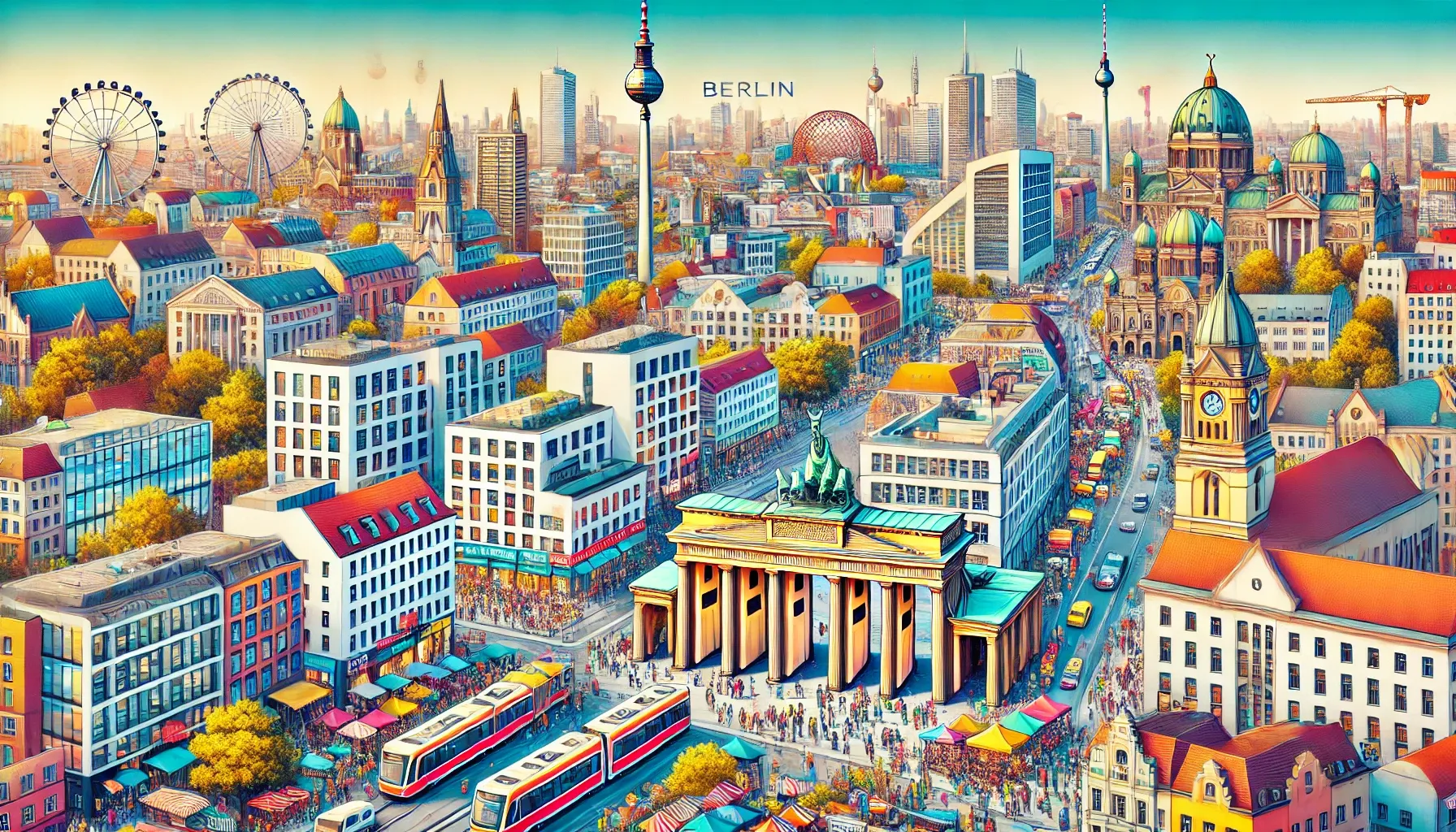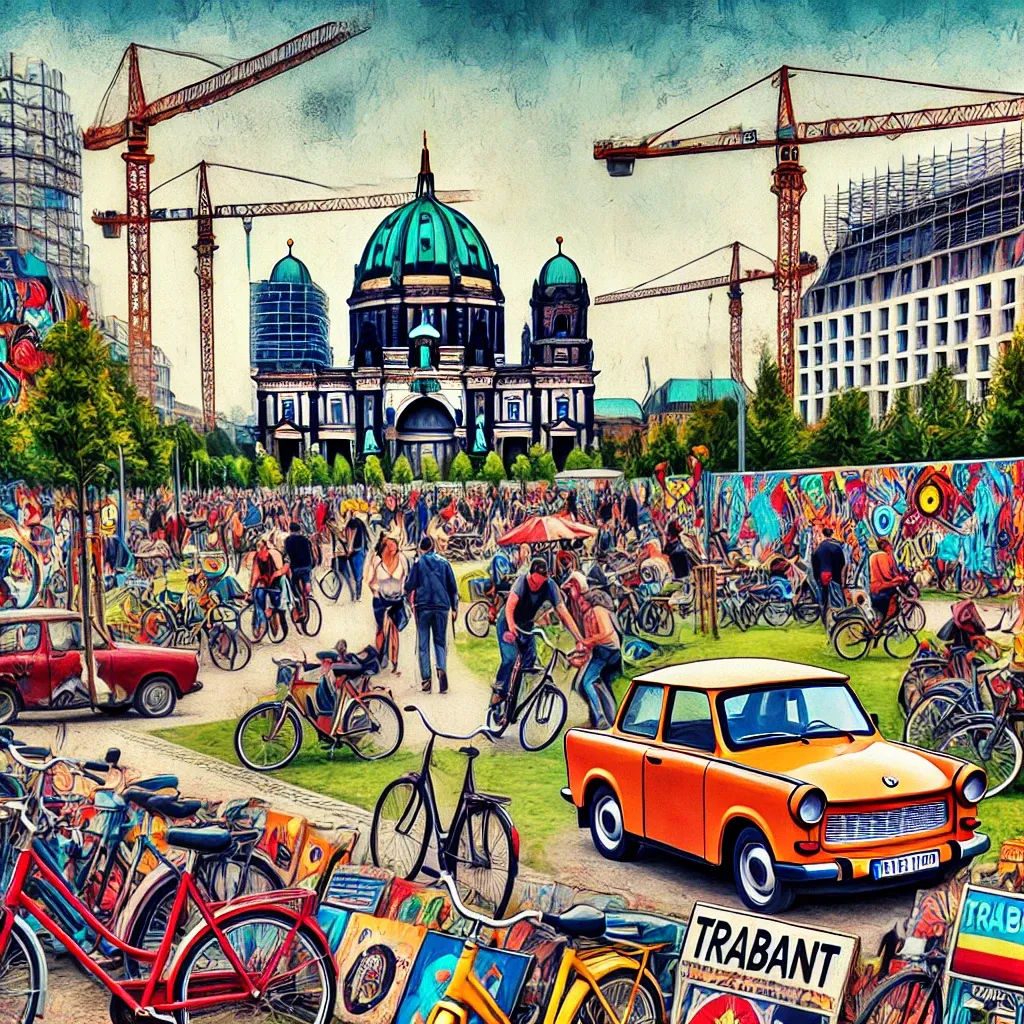What is Berlin like? The life and architecture of the capital of Germany.

- How did Berlin become a reflection of contrasts and the diversity of life?
- How Berlin is changing: from Trabants to the real estate market
A new look at Berlin
The second part of the reflections by the editor-in-chief of the portal, Philipp Berezin, on life in German cities offers a new perspective on the capital — Berlin. The first part is available here. The phrase "a rich city, a poor city" does not quite accurately reflect the reality within Berlin's borders. In this metropolis, the lines between prosperity and poverty are blurred, and identifying where the slums end and the picturesque neighborhoods begin is no easy task.
And this is quite understandable, as Berlin has experienced numerous destructions and was then, quite literally, divided. After these events, a large-scale reconstruction began, but the consequences of the past devastation are still noticeable. Berlin can be characterized as a patchwork quilt, with a distinctive variety in each of the central districts — Friedrichshain-Kreuzberg and Mitte, as well as Charlottenburg and Spandau. These areas differ significantly from one another, both inside and outside their boundaries.
Contrasts of the city
Attractive streets sometimes coexist with less comfortable neighborhoods. Before the viewers' eyes, a true transformation takes place: we pass through quiet courtyards with small houses, and suddenly find ourselves in the atmosphere of the socialist era, where gray buildings rise eight or nine stories high, with the most iconic structure being a transformer station.
In just a few minutes, we will reach Karl-Marx-Allee, where the architecture of the Stalin era can be seen. In such majestic cities as Paris or London, such contrasts are hardly noticeable!
The city of the future and its neighborhoods
In ten minutes, passing by unique central districts with eclectic styles, we arrive at the "city of the future," where outstanding modern architects showcase their bold concepts. The simple phrase "I live in Berlin" doesn't provide a clear picture of life in this city.
It's important to clarify which area or even what address you live at, as this will contribute to a more accurate understanding of the locality.
Diversity of the population
Berliners are also a heterogeneous audience - you're bound to run into:
- Turks
- Arabs
- Japanese people who most often end up here as tourists
One cannot overlook the Germans either. Russian is heard quite clearly, especially around Alexanderplatz, where, just like in any market in the nineties, you can encounter people engaging in scams.
The scene is reminiscent of the turbulent times when tough guys in plaid shirts and leather jackets are on duty at various "gambling" outlets. Young people look around warily, trying to attract the attention of passers-by.
Unique atmosphere
Against the backdrop of the famous TV Tower, the Friendship of Peoples fountain, the busy train station and architectural works such as the Old Museum and the Cathedral, a rather peculiar scene unfolds.
- There are large department stores located in the square.
- Many popular cafes
- Next to the shops, you can see the sale of Russian ushankas and souvenirs with Soviet symbols.
This doesn't surprise anyone here. On the contrary, it feels like someone is either nostalgic for the past years or openly profiting from memories of the past.
The popularity of trabantes
In Berlin, small shops have a particular fondness for Trabants made of plastic, which come in a wide variety. Images of these cars can be seen on various items such as mugs, socks, pencil sharpeners, lighters, and erasers.
Green spaces in Berlin
One of the most wonderful aspects of life in Berlin is its green spaces, where the presence of extensive parks greatly enriches the atmosphere of the capital. The Tiergarten stands out in particular — it is a long and picturesque park filled with numerous shades of green, reminiscent of Pavlovsk, and it begins in close proximity to the Brandenburg Gate. The city also has small squares that delight the locals.
Bicycle as a means of transportation
Another positive aspect is that the locals actively use bicycles for transportation. I couldn't resist the temptation and rented a bike, which brought me a lot of joy. Riding past pedestrians on my two-wheeled friend, moving along the designated bike paths with their traffic signals and friendly competitions, I felt a true sense of happiness.
There are far fewer cars on the streets, and in some neighborhoods there are also far fewer pedestrians. Of all the neighborhoods in Berlin, I would choose Pankow to live in, or rather its part, where the streets are cobbled and the old two-story houses create a cozy atmosphere. Here cars pass only rarely, once every ten minutes. During the daytime, this neighborhood is quiet, and even casual passersby will instantly catch the eye of attentive old ladies. In addition, the cost of living here is much more acceptable compared to the city center.
If you evaluate it, the price per square meter here is 30-50% lower.


Sale flat in Saint-Aubin-les-Elbeuf with city view 85 847 $

2 Bedrooms

1 Bathroom

68 м²


Construction modernization
One only needs to look around to see construction cranes everywhere. This phenomenon clearly demonstrates the modernization of Berlin. This is most noticeable in the very center of the capital, where similar construction projects would be strictly limited in other European countries. Nevertheless, the work on the subway line on Unter den Linden continues.
Even with the most meticulous organization by the Germans, it is impossible to completely hide construction work. Moreover, it is impossible to take a panoramic shot that does not include at least part of the construction process. The fact that the local residents' eyes cannot be torn away from the new buildings confirms their high level of interest.
Real estate in Berlin
Indeed, the real estate market in Berlin is very vibrant right now, but the search conditions can be challenging when it comes to good quality. No cosmetic changes can transform a house built 40 years ago, even if its appearance is quite appealing. To access modern amenities like elevators and energy-saving technologies, it's better to focus on new constructions.
Trends in the housing market
In recent years, Berlin has truly become a trendy destination, which has undoubtedly impacted the real estate market. Realtors eagerly share stories about buyers who purchased apartments 7-8 years ago and are now selling them for double the profit.
In recent months, there has been a slight slowdown in price growth; however, the overall trend remains positive, and property values continue to rise.

Conclusion
In conclusion, I would like to say that life in Berlin is full of contrasts and unexpected discoveries. This city, like a big patchwork quilt, combines a variety of histories and cultures, and its familiarity with different social strata makes you realize that Berlin is not just a geographical place, but a living organism that is constantly evolving. I continued to marvel at how on every corner you can find something unexpected, from cozy residential neighborhoods to modern buildings that seem to compete with each other in uniqueness.
The way different layers of society intertwine creates a unique atmosphere where everyone can find their place. Yes, the price dynamics of real estate and life in general are changing — they, like the city itself, are subject to the influences of time and fashion. However, despite this, Berlin remains a city that knows how to captivate. Its residents are presented with wide horizons of opportunities, and history smoothly blends with modern trends. Everyone, whether a local or a new migrant, contributes to this amazing mosaic.
Features of life in Berlin
- Contrasts:Berlin is a blend of different cultures and histories.
- Variety:Each neighborhood in the city has its own unique characteristics and atmosphere.
- Evolution:The city is changing in response to the times and fashion trends.
- Opportunities:Residents can find unique opportunities for self-expression and business.
My experience of living here is that such a great palette of contrasts makes Berlin an extraordinary place. I love exploring its hidden corners and finding beauty in the most unexpected environments. Although I'm still not sure if I consider Berlin my city, I'm amazed by its diversity and vitality. Undoubtedly, anyone who has been here at least once will take away with them a unique experience. In this city, where the "opulent" and the "poor" neighbor side by side, everyone can find a piece of themselves and perhaps one day call it home.
Comment
Popular Posts
9 October 2024
3502
9 October 2024
283
Popular Offers




Subscribe to the newsletter from Hatamatata.com!
Subscribe to the newsletter from Hatamatata.com!
I agree to the processing of personal data and confidentiality rules of Hatamatata




